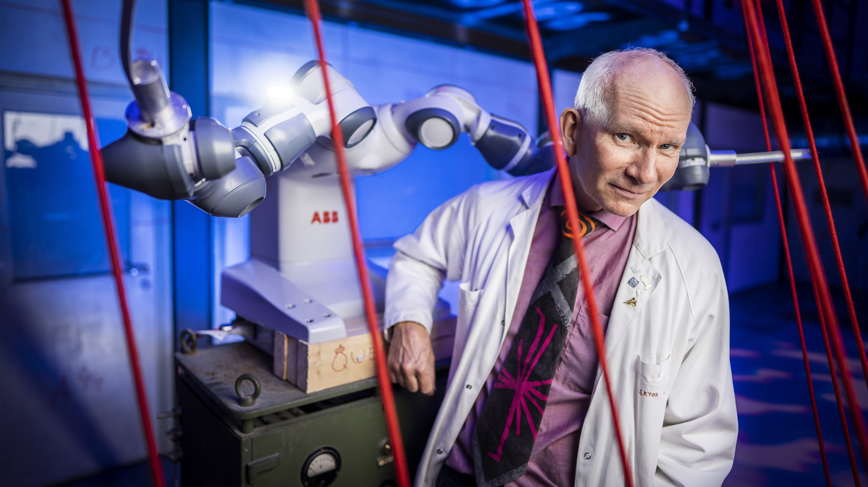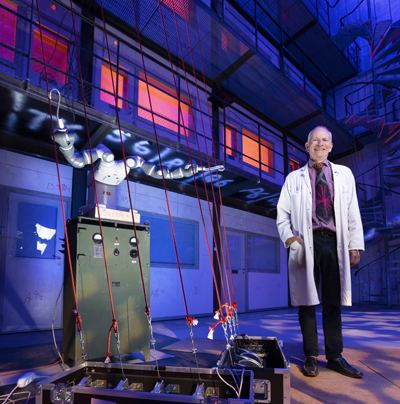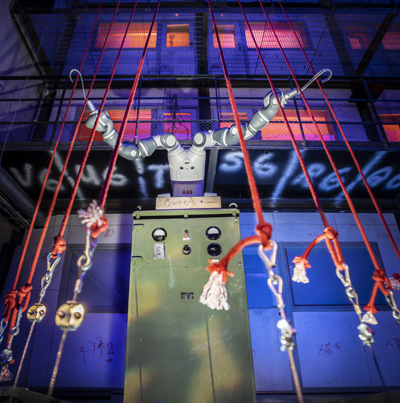KTH opera to premiere in December

The Reactor Hall at KTH hosts the December 1 premiere of the opera The Tale of the Great Computing Machine. The opera is based on the children´s book of the same title by late Nobel physics laureate and KTH professor, Hannes Alfvén. Tickets go on sale Friday 30 September.
“This opera asks important questions about computers, digitalisation and artificial intelligence – a discussion that KTH obviously is and should be taking a part in. This is an example of that,” Leif Handberg says. Handberg is manager of the Reactor Hall at KTH and pioneer of the opera project.

In Alfvén´s book The Tale of the Great Computing Machine, he predicts a lot of the digital development that we are experiencing today, and the relationship between humankind and technology makes it a timeless work. This relationship is also the theme of the opera, which is created by Artistic Directors Carl and Åsa Unander-Scharin in association with Vadstena-Akademien.
It is a 75-minute chamber opera in one act. The story is narrated by Computa, the voice from the future, in the form of a pre-recording featuring one of the world’s leading contralto singers, the Court Singer Anna Larsson. Computa is also the only character in Alfvén’s book, where human beings are being spoken of in general terms. This was something of a challenge for the artistic directors when producing the opera libretto, Handberg explains.
“Carl and Åsa Unander-Scharin needed to create characters who convey different events in the opera,” he says.
Computa is heard from different directions
On the stage – or rather the stage room, as the entire Reactor Hall will be used for the opera – the audience sees dancer Argon, soprano Hydrogenii, mezzo-soprano Oxygeni, baritone Nitritio and bass Carbon. Except for Carbon, their character names are based on gases found in the earth’s atmosphere. The opera also features two collaborative YuMi robots from ABB, named King and Queen.
“Computa is portrayed by the voice that can be heard from different parts of the hall, directed by the dancer, Argon. The robots too are staged by Computa, who eventually exists everywhere and nowhere,” Handberg says.
Also present in the stage room are five musicians playing violin, recorders, viola da gamba/lirone, bass trombone and percussion respectively. The musicians are not hidden away in an orchestra pit, but move around the entire stage space, as do the singers and dancers.

“We really use the entire Reactor Hall. But when the percussionist plays the marimba he has to stand still, as a marimba’s not easy to move around,” Handberg says.
Other instruments too have important parts to play, one example being The Vocal Chorder, an interactive digital instrument developed by the artistic directors. It consists of lines that create notes and music when stretched and pulled. Another example is the old organ from Skandia cinema in Stockholm, which has been placed in the Reactor Hall at KTH for several years.
“But there’s no organist sitting at the keys playing the organ. It’s triggered by bodily gestures and singing,” Handberg says.
Music-interactive visual projections
At the top of the balcony in one part of the Reactor Hall there is also a camera which captures the dancer’s movements and converts them into coloratura singing.
“Music-interactive visual projections will fill the walls and floors as yet another manifestation of Computa,” Handberg says.
The opera The Tale of the Great Computing Machine will be performed 17 times, with the premiere on 1 December. Tickets go on sale Friday 30 September at 10.00 AM. More about the opera and ticket sales.
Håkan Soold
